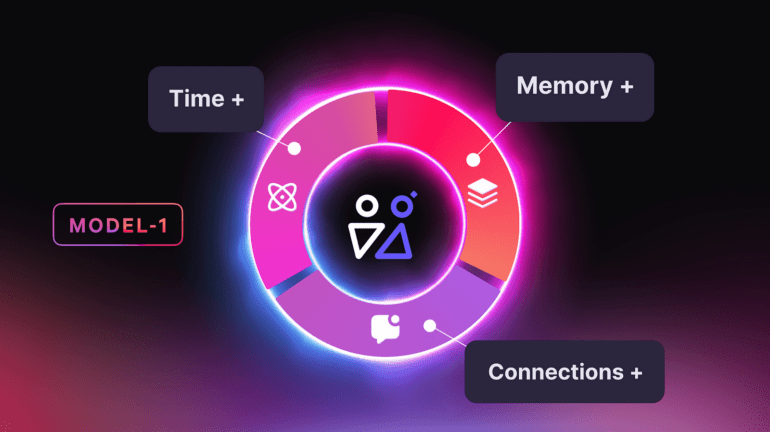TL;DR:
- ChatGPT’s launch brought AI to the forefront, sparking a race among tech giants.
- Personal.ai offers a unique approach with a personal language model system.
- It trains on individual user data to create an artificial extension of each user.
- Data ownership remains with the users, ensuring privacy and trust.
- Personal.ai focuses on enhancing human connections rather than replacing them.
- ChatGPT and Personal.ai differ in size, with ChatGPT having more parameters and higher operational costs.
- Personal.ai prioritizes interoperability and platform-agnostic functionality.
- Training on user data mitigates issues of misinformation and bias.
- Personal.ai emphasizes safety, ethical responsibility, and democratization of AI models.
- The market anticipates the transformative potential of personalized intelligence.
Main AI News:
The emergence of artificial intelligence (AI) has transformed the landscape of technology, and with the launch of ChatGPT in November, it has taken on a new dimension. What was once concealed beneath the surface of the internet has now become prominently visible, captivating users worldwide. This introduction of an interactive AI chatbot seems to have ignited a race among tech giants, each vying to develop their own AI solutions.
OpenAI has unveiled ChatGPT, while Google has its own creation called Bard, with plans to integrate AI capabilities across its Google Suite—a move mirrored by Microsoft. Meanwhile, Meta is making strides in developing its own AI system, and Nvidia is experiencing a surge in demand for the chips that power these models. The competition is fierce, as emphasized by Microsoft co-founder Bill Gates, who recently stated that the victor of the AI race would be the company that successfully develops a personal digital assistant.
Enter Personal.ai—an innovative player in the field that aims to redefine the boundaries of AI. Going beyond the conventional approach, Personal.ai presents a unique proposition: a personal language model system. Instead of relying on vast datasets to generate generic knowledge, this system trains itself based on the individual user. The AI profile of each user is regularly updated, creating a constantly expanding repository that encompasses their thoughts, beliefs, opinions, and more. The objective is to create an artificial extension of the user, an entity capable of imitating their traits and characteristics.
Crucially, the data collected from each user remains exclusive to them; it is not aggregated or used for any other purpose. The ownership of data lies firmly in the hands of the users themselves. Suman Kanuganti, the founder and CEO of Personal.ai, draws inspiration from the idea of having conversations with deceased loved ones and aims to build more than just a digital assistant. Personal.ai strives to be an invaluable tool that handles tasks, drafts emails, and engages in conversations that closely resemble the user’s own voice.
What sets Personal.ai apart from its competitors? Let’s start with ChatGPT. While ChatGPT is a large language model, Personal.ai is purposefully designed as a smaller language model. The immediate difference is evident: ChatGPT boasts an impressive 170 billion parameters, whereas Personal.ai has a modest 120 million parameters. Think of these parameters as the settings that enable a model to generate content. The increased size of ChatGPT necessitates a higher operational cost.
While OpenAI, the creators of ChatGPT, are striving to create Artificial General Intelligence (AGI)—a hypothetical form of AI surpassing human intelligence—Personal.ai focuses on enriching human connections rather than replacing them. Notably, giants like Microsoft and Google are integrating AI assistants into their suite of applications, but Personal.ai takes a different approach. Kanuganti asserts that their models are designed to be platform-agnostic, ensuring seamless functionality across various platforms. Moreover, data sharing is not a concern with Personal.ai, as it is founded on the principles of trust and interoperability—a key advantage for a startup in this space.
By training its AI on user data rather than relying on the vast expanse of the internet or aggregated data, Personal.ai addresses the long-standing issues of misinformation and bias that have plagued the AI industry. This approach significantly mitigates these problems, offering a more reliable and accurate AI experience. Despite the potential for enhancing productivity in various aspects of users’ lives, Kanuganti remains unwavering in his commitment to safety, ethical responsibility, and the democratization of AI models. He advocates for empowering individuals with data ownership and emphasizes the transformative potential of personal intelligence in the digital realm.
Conclusion:
The rise of Personal.ai signifies a shift towards personalized AI solutions. By prioritizing user data ownership, privacy, and human connections, Personal.ai sets itself apart from the competition. This development presents opportunities for the market, where tailored AI experiences can enhance productivity and redefine the boundaries of personal intelligence.

